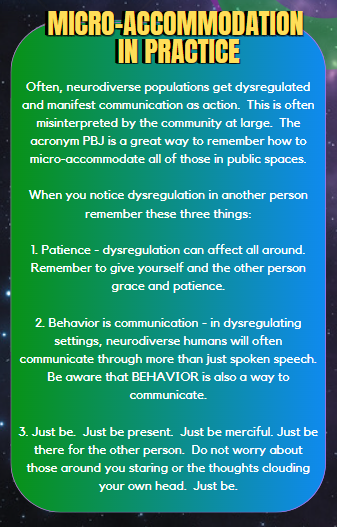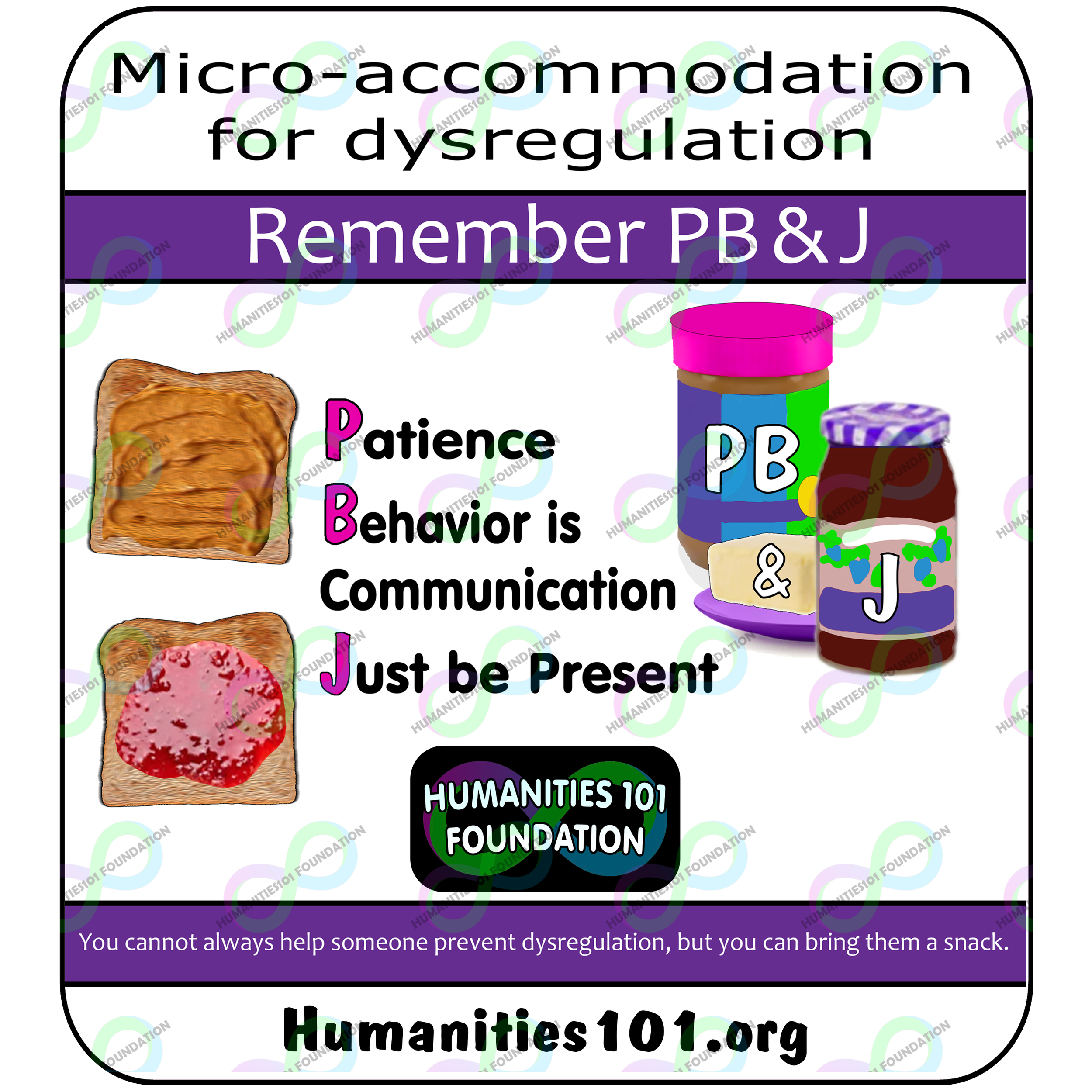
Presentation Research Spring 2024
What is Neurodiversity?
Oxford’s English dictionaries define neurodiversity as “the range of differences in individual brain function and behavioral traits, regarded as part of normal variation in the human population (used especially in the context of autistic spectrum disorders).“
Perhaps a more fitting definition would be a celebration of the myriad neurotypes found amongst the human species. For far too long the medical field and society at large have had a negative misunderstanding of neurodiverse individuals who deserve to celebrated just as much as there allistic counterparts.
Neurodiverse Diagnoses: Who Is Neurodivergent?
Agenesis and Dysgenesis of the Corpus Callosum - failure to form or abnormal formation of the Corpus Callosum part of the brain
Prevalence: (ACC) is among the most frequent human brain malformations with an incidence of 0.5–70 in 10,000 (NLM).
Apraxia - inability to perform particular purposive actions, as a result of brain damage
Prevalence: Childhood Apraxia of Speech: 1 child per 1,000 (NLM).
Attention Deficit Hyperactivity Disorder - a mental condition, beginning in childhood and often persisting into later life, that is characterized by persistent difficulty in maintaining attention and concentration, and is frequently accompanied by hyperactive and impulsive behavior
Prevalence: “ADHD is estimated to affect around 5% of children and 2.5% of adults worldwide, according to the World Health Organization (WHO)”
Auditory Processing Disorder (APD) - a type of hearing loss caused by something affecting the part of the brain that processes how you hear
Prevalence: 1.94 per 1,000 children (NLM)
Autism Spectrum Disorder (ASD) - a neurological and developmental disorder that affects how people interact with others, communicate, learn, and behave.
Prevalence: About 1 in 36 children has been identified with autism spectrum disorder (CDC).
Pathological Demand Avoidance (PDA) - a profile on the autism spectrum, involving the avoidance of everyday demands and the use of ‘social’ strategies as part of this avoidance that is anxiety driven
Prevalence: currently no data to reliably indicate how common it may be
Bipolar Disorder: - a mental illness that causes unusual shifts in a person’s mood, energy, activity levels, and concentration.
Prevalence: An estimated 4.4% of U.S. adults experience bipolar disorder at some time in their lives (NIMH).
Borderline Personality Disorder: - a mental illness that severely impacts a person's ability to manage their emotions.
Prevalence: - 1.6% in the general population and 20% in the inpatient psychiatric population (NIMH).
Cerebral Palsy: - a condition marked by impaired muscle coordination (spastic paralysis) and/or other disabilities, typically caused by damage to the brain before or at birth.
Prevalence: - About two to three children out of every 1,000 have Cerebral Palsy (cerebalpalsy.org)
Disruptive Mood Dysregulation Disorder - a condition in which children or adolescents experience persistent irritability and anger and frequent, intense temper outbursts.
Prevalence: - Three-month prevalence rates for meeting disruptive mood dysregulation disorder criteria ranged from 0.8% to 3.3% with the highest rate in preschoolers (NLM).
Down Syndrome - a condition in which a person has an extra chromosome.
Prevalence: Down syndrome occurs in about 1 in every 700 babies (CDC).
Dyscalculia - difficulty in performing arithmetical calculations resulting from damage to the brain
Prevalence: 3–7% of all children, adolescents, and adults suffer from dyscalculia.
Dysgraphia - inability to write coherently, as a symptom of a neurological condition or as an aspect of a learning disability.
Prevalence: Between 10% and 30% of children experience difficulty in writing, although the exact prevalence depends on the definition of dysgraphia (NIH).
Dyslexia - a condition of neurodevelopmental origin that mainly affects the ease with which a person reads, writes, and spells, typically recognized as a specific learning disorder in children
Prevalence: Dyslexia affects 20 percent of the US population and represents 80–90 percent of all those with learning disabilities (Yale).
Dyspraxia - difficulty in performing coordinated movements, often associated with a neurodevelopmental condition in children (developmental coordination disorder)
Prevalence: up to 6% of the population, with up to 2% being severely affected (Foundation for People with Learning Disabilities).
Echolalia - repetition of words just spoken by another person, often occurring as a symptom of ASD.
Prevalence: The prevalence of echolalia is unclear as it is a heterogeneous symptom seen in various pathological states (NIH).
Epilepsy and seizure disorders - a neurological disorder marked by sudden recurrent episodes of sensory disturbance, loss of consciousness, or convulsions, associated with abnormal electrical activity in the brain.
Prevalence: estimated proportion of the general population with active epilepsy at a given time is between 4 and 10 per 1000 people. Globally, an estimated 5 million people are diagnosed with epilepsy each year (WHO).
Fetal Alcohol Syndrome or Fetal Alcohol Spectrum Disorders (FASDs) are a group of conditions that can occur in a person who was exposed to alcohol before birth.
Prevalence: Using medical and other records, CDC studies have identified about 1 infant with FAS for every 1,000 live births in certain areas of the United States (CDC).
Generalized Anxiety Disorder -a mental condition characterized by excessive or unrealistic anxiety about two or more aspects of life (work, social relationships, financial matters, etc.), accompanied by symptoms such as increased muscle tension, impaired concentration, and insomnia.
Prevalence: An estimated 2.7% of U.S. adults had generalized anxiety disorder in the past year (NIMH).
Hyperlexia - advanced and unexpected reading skills and abilities in children way beyond their chronological age
Prevalence: Among autistic children, about 6% to 14% have hyperlexia
Irlen Syndrome - a perceptual processing disorder that affects the brain's ability to process visual information because of light sensitivity.
Prevalence: Around 50% of children and adults with reading, learning, or attention problems have Irlen Syndrome (Irlen.com).
Misophonia - a strong dislike or hatred of certain sounds
Prevalence: estimated to be close to 20% of the population (NIH)
Multiple sclerosis - a chronic, typically progressive disease involving damage to the sheaths of nerve cells in the brain and spinal cord, whose symptoms may include numbness, impairment of speech and of muscular coordination, blurred vision, and severe fatigue.
Prevalence: over 1.8 million people have MS worldwide (WHO).
Obsessive-Compulsive disorder - a long-lasting disorder in which a person experiences uncontrollable and recurring thoughts (obsessions), engages in repetitive behaviors (compulsions), or both.
Prevalence: lifetime prevalence of OCD among U.S. adults was 2.3% (NIMH)
Oppositional Defiant Disorder (ODD) - a frequent and ongoing pattern of anger, irritability, arguing and defiance toward parents and other authority figures.
Prevalence: reported to affect between 2% and 16% of children and adolescents in the general population.
Parkinson’s Disease - a progressive disease of the nervous system marked by tremor, muscular rigidity, and slow, imprecise movement, chiefly affecting middle-aged and elderly people. It is associated with degeneration of the basal ganglia of the brain and a deficiency of the neurotransmitter dopamine.
Prevalence: Nearly 90,000 people in the U.S. are diagnosed with PD each year (Parkinson.org).
Slow Processing Speed - when people need a lot of time to take in, make sense of, and respond to information.
Prevalence: The prevalence of Slow Processing Speed is unclear
Stammering - speaking with sudden involuntary pauses and a tendency to repeat the initial letters of words.
Prevalence: The commonly used statistic is that 1% of the adult population stammers and 5% of children stammer at some point (Stamma.org).
Synesthesia - the production of a sense impression relating to one sense or part of the body by stimulation of another sense or part of the body.
Prevalence: Synesthesia is a condition present in 2%–4% of the population
Tourette’s Syndrome - a disorder that involves repetitive movements or unwanted sounds (tics) that can't be easily controlled.
Prevalence: 1 out of every 333 (0.3%) children 3–17 years of age in the United States (CDC).
Traumatic Brain Injury - a form of acquired brain injury, occurs when a sudden trauma causes damage to the brain.
Prevalence: There were approximately 214,110 TBI-related hospitalizations in 2020 (CDC).
Micro-Accommodation in Practice
Often, neurodiverse populations get dysregulated and manifest communication as action. This is often misinterpreted by the community at large. The acronym PBJ is a great way to remember how to micro-accommodate all of those in public spaces.
When you notice dysregulation in another person remember these three things:
1. Patience - dysregulation can affect all around. Remember to give yourself and the other person grace and patience.
2. Behavior is communication - in dysregulating settings, neurodiverse humans will often communicate through more than just spoken speech. Be aware that BEHAVIOR is also a way to communicate.
3. Just be. Just be present. Just be merciful. Just be there for the other person. Do not worry about those around you staring or the thoughts clouding your own head. Just be.
Masking
Masking, in the context of autism, refers to the effort by individuals to conceal their autistic traits or behaviors to fit in or conform to societal norms. The practice of masking can have several negative effects on autistic individuals including mental/emotional strain, reduced access to supports/accommodations, negative impacts on social/work relationships, and Burnout.
Prolonged masking can have long-term consequences on an individual's mental and emotional well-being, potentially leading to chronic stress-related health issues.
It's important to create inclusive environments that embrace neurodiversity and support individuals without expecting them to mask their identities or behaviors. Providing acceptance, understanding, and implementing micro-accommodations can help create an environment where autistic individuals feel comfortable being themselves without the need to constantly mask.
Neurodiversity: There is no normal
Neurodiversity refers to the diversity of human brains and minds, encompassing the wide range of neurological differences and variations in cognitive functioning found within the population.
The concept of neurodiversity emphasizes that these variations are a normal and valuable part of human diversity, contributing to different perspectives, talents, and ways of processing information.
It advocates for acceptance, understanding, and respect for individuals with diverse neurological traits, promoting inclusivity and accommodating these differences rather than seeking to cure or normalize them.
Trips to the grocery store can be significantly easier with social scripts for individuals who may become dysregulated, overwhelmed, and anxious in certain social situations.
Attempts from society to be more conscientious and understanding that a trip to the grocery store is the not the easiest tasks for some will equally aid these individuals.
Understanding and micro-accommodations may seem like an insignificant effort but for some they will mean the world.
Not all communication is verbal and anytime people need to be understood when they are nonverbal a nonspeaking communication aid can be beneficial.
Standards of Conduct and Civility are not constructed with neurodivergent people in mind and are antiquated in nature.
Autism diagnoses are horribly skewed by outdated and unresponsive diagnostic criteria that favors white heteronormative males.
Understanding Autism helps everyone in the community succeed with micro-accommodations.
Micro-Accommodation
Micro-accommodations are small, nuanced, and adaptable adjustments in environments, behaviors, or communication styles that cater to the diverse needs of individuals, especially those with disabilities or who are neurodiverse. These subtle modifications aim to enhance inclusivity and accessibility without fundamentally changing the core structure or nature of a space or activity, ultimately promoting a greater sense of belonging and community for everyone.
The practice of micro-accommodation is informed by the theories of Don Norman and User Experience (UX). These ideas, coupled with Universal Design for Learning (UDL) and the praxis of the ABC principle of community, are a low-cost, high-yield way to include all humans regardless of cognitive or physical abilities or limitations.
Examples of Micro-Accommodations
Complimentary earplugs or sun visors for events
Quiet sensory break room with supports
Vestibular input room complimentary to sensory break room
Social scripts or event guides for interaction
“Pull” websites with detailed and explained information
Explaining terms like “appropriate,” “respectable,” and “professional” in specific, detailed language
Familiarization tours prior to events
Infographics Help People Understand Dysregulation
In an effort to provide easily digestible concepts of inclusivity for neurodiversity the Humanities101 Foundation offers a number of infographics on community building and assisting in times of dysregulation.
PB&J
You cannot always help someone prevent dysregulation, but you can bring them a snack.
Sensory Diet Menu
Sensory seeking individuals can find comfort in a sensory diet that fits their needs.
Project Planner
The Humanities101 Foundation provides helpful worksheets to navigate everyday activities for neurodiverse individuals.
Cassidy, Sarah, Sheena Au-Yeung, Ashley Robertson, Heather Cogger-Ward, Gareth Richards, Carrie Allison, Louise Bradley, et al. “Autism and Autistic Traits in Those Who Died by Suicide in England: The British Journal of Psychiatry.” Cambridge Core, February 15, 2022. https://www.cambridge.org/core/journals/the-british-journal-of-psychiatry/article/autism-and-autistic-traits-in-those-who-died-by-suicide-in-england/04367C4DD9D8B4B3375A0D25C4764A54
Autistica. “Personal Tragedies Public Crisis,” 2017. Accessed December 29, 2023. .https://www.autistica.org.uk/downloads/files/Personal-tragedies-public-crisis-ONLINE.pdf
“Data and Statistics on Autism.” Center for Disease Control, April 2023. Accessed December 29, 2023. https://www.cdc.gov/ncbddd/autism/data.html
Hazlett, Adam, et. al. “Undiagnosis: The Suicide Crisis in Undiagnosed Autistic Adults,” November 1, 2023. https://www.linkedin.com/pulse/undiagnosis-suicide-crisis-undiagnosed-autistic-adults-adam-hazlett-upmcc/
National Cancer Institute. “Neurodiversity,” April 25, 2022. https://dceg.cancer.gov/about/diversity-inclusion/inclusivity-minute/2022/neurodiversity
Walker, Nick. NEUROQUEER • THE WRITINGS OF DR. NICK WALKER. “WHAT IS AUTISM? • NEUROQUEER,” August 11, 2023. https://neuroqueer.com/what-is-autism/
The Humanitites101 Foundation Presentations Page
Thank you for visiting the Humanities101 Foundation Presentations page. This is a dynamic presentation that evolves as community input provides a more optimal level of inclusivity.





















